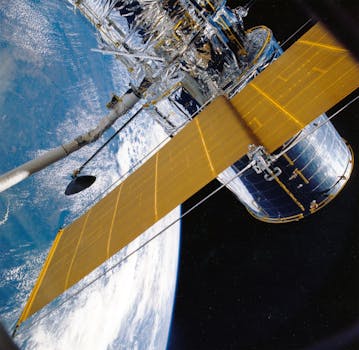
LEO satellites are a type of artificial satellite that orbits the Earth at an altitude of around 160 to 2,000 kilometers. The Focus Keyword LEO satellites have become increasingly popular in recent years due to their advanced capabilities and applications. With the help of WordPress, many companies and organizations are now able to create and manage their own LEO satellite-related websites and content.
One of the main advantages of LEO satellites is their low latency and high-speed data transmission. This makes them ideal for applications such as telecommunications, navigation, and Earth observation. LEO satellites are also relatively inexpensive to launch and maintain compared to traditional geostationary satellites, making them an attractive option for many companies and governments.
The use of LEO satellites is not limited to telecommunications and navigation. They are also being used for a variety of other applications, including Earth observation, weather forecasting, and space exploration. For example, the Planetary Resources company is using LEO satellites to search for water and mineral resources in space.
Another company, SpaceX, is using LEO satellites to provide internet connectivity to remote and underserved communities around the world. The company’s Starlink constellation of LEO satellites is designed to provide high-speed, low-latency internet connectivity to anyone, anywhere in the world.
In addition to their practical applications, LEO satellites are also being used for scientific research and space exploration. For example, the NASA agency is using LEO satellites to study the Earth’s climate, weather patterns, and natural resources. The agency’s Orbiting Carbon Observatory (OCO) mission is using LEO satellites to study the Earth’s carbon cycle and its impact on the climate.
LEO satellites are also being used for space exploration and development. For example, the Blue Origin company is using LEO satellites to test and develop its New Shepard suborbital launch system. The company’s New Glenn orbital launch vehicle is also designed to launch LEO satellites into orbit.
Despite their many advantages and applications, LEO satellites also pose some challenges and risks. For example, the increased use of LEO satellites is creating a growing problem of space debris in Earth’s orbit. This debris can pose a significant risk to operational satellites and other spacecraft, and can also contribute to the growing problem of space pollution.
To address these challenges, many companies and governments are working to develop new technologies and strategies for sustainable space development. For example, the United Nations is working to develop international guidelines and regulations for the use of LEO satellites and other space technologies. The UN Office for Outer Space Affairs is also providing technical assistance and support to countries and companies working to develop their own space programs and technologies.
In conclusion, LEO satellites are transforming the space industry with their advanced capabilities and applications. With the help of WordPress, many companies and organizations are now able to create and manage their own LEO satellite-related websites and content. While there are challenges and risks associated with the use of LEO satellites, many companies and governments are working to develop new technologies and strategies for sustainable space development.
As the use of LEO satellites continues to grow and evolve, it is likely that we will see many new and innovative applications of this technology in the future. From telecommunications and navigation to Earth observation and space exploration, LEO satellites are poised to play a major role in shaping the future of space technology and development.
With their low latency, high-speed data transmission, and relatively low cost, LEO satellites are an attractive option for many companies and governments. As the space industry continues to grow and evolve, it is likely that we will see many new and innovative applications of LEO satellites in the future.
See more:






